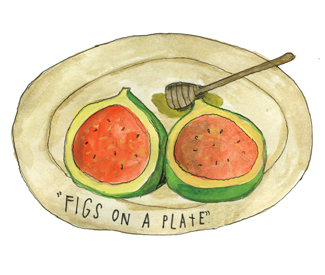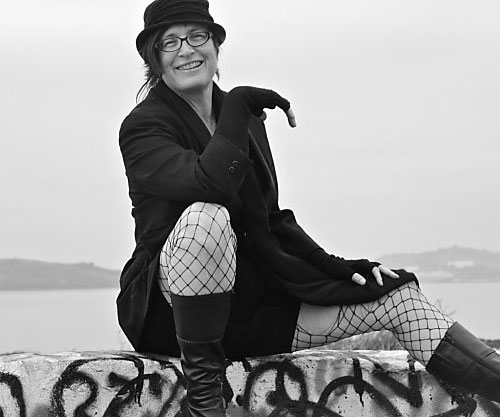culture@sfbg.com
Gay liberation changed Martin Duberman’s life. In the 1960s, Duberman taught history at Princeton, hardly a bastion of radical thought. Yet he found himself invigorated by nascent counterculture movements and became a champion of the left, penning essays in The New York Times and serving as faculty advisor to the Princeton chapter of Students for a Democratic Society. At the same time, Duberman spent years in intensive psychotherapy in desperate attempts to "cure" his homosexuality. Soon after the emergence of the gay liberation movement, however, he rejected this homophobic vision and embraced a gay identity. His work also became queerer.
Over the years, he has written more than 20 books — biographies, plays, memoirs, history texts, and a novel — on a wide range of topics ranging from antislavery activism to the civil rights movement and Stonewall. His new book, Waiting to Land: A (Mostly) Political Memoir, 1985-2008 (The New Press 352 pages, $26.95), is a combination of diary entries and recollections from the Reagan years to the present. This latest work serves as a window into Duberman’s activist and scholarly careers, as well as his critiques of the mainstreaming of the gay and lesbian movement.
SFBG We’re approaching the 40th anniversary of the Stonewall riots, the symbolic event of early gay liberation, and I’m wondering if you think there’s any of this liberationist spirit left in the gay movement.
Martin Duberman Well, I guess it depends on how you define liberationist. In the early days, gay liberationists were aware of a great many other ills in the society besides their own. Their own were real, and they were well aware of that. But there was a lot wrong, they felt, with the system, and their central goal was to challenge many of the established institutions and values. Today most LGBT people seem to think of themselves — certainly they tell the mainstream — as "just folks," except for this little matter of a separate sexual orientation. That they’re patriotic Americans and they want the same things that everybody else wants, etc.
SFBG In Waiting to Land, you cover this assimilationist turn in the gay movement. You talk about the March on Washington in 1993 where gays in the military became the dominant issue. You also talk about Stonewall 25, which happened one year later in New York City, where one of the biggest fundraising events was held onboard a U.S. aircraft carrier, and where corporate sponsorship arguably overwhelmed any celebration of resistance, history, or culture. Has anything changed in the last 15 years?
MD The early ’70s were still fueled by the countercultural movement of the ’60s, and the early gay movement built on the insights and the demands of, say, the feminist movement or the antiwar movement. I mean there was so much going on in the ’60s, and together it all amounted to a challenge to the so-called experts. There was an across-the-board challenging of many traditional views, so finally that began to seep down, or up — whatever it is — to us. That’s the whole trouble, I think, with the assimilationist turn. It denies our own gay past and our culture and our politics. I mean, they’re willing to throw all that away in order to make stronger the claim that we’re just folks.
SFBG And do you feel like mainstream gay people have become more heterosexualized? I mean in that particular way of embracing long-term committed partnership, monogamy, or now even marriage, as the only type of love or intimacy that’s valid?
MD Yeah. Once again, the banner of lifetime monogamous pair-bonding has been raised. Now some of that is the result of AIDS, in which people were scared to death, so they settled down into so-called permanent relationships. Not everybody. But many more than had done so in the ’70s.
SFBG When you talk about AIDS in Waiting to Land, it punctures the style of your writing. You’ll be writing something that’s more ruminative, and then you’ll have three or four sentences about a friend who died or a series of friends who died, and then you go back into your thoughts about something outside of that.
MD I think that’s right. It’s why I put that subtitle in. I say "mostly political," because when it came to the death of friends, I did talk about my personal feelings, and my sadness, whereas most of the time in Waiting to Land I’m talking about external events or public policies.
SFBG You yourself have played a role as both an insider and outsider in a variety of realms. In Waiting to Land, you deliver scathing critiques of the rigid hierarchies and competitive structures of academia. You talk about the homophobia of the straight left, and you talk about the limited agenda of the gay mainstream. You talk about the exclusiveness of establishment theatre and mainstream media. Yet you’ve also worked inside all these structures. So I’m wondering how these institutions have formed your politics and how you’ve helped to form or transform these institutions.
MD [W.E.B.] Du Bois, the great African American leader, once said something — I think he called it double vision. He said that although he had had a superb education and was accepted by mainstream whites, nonetheless he felt he was a spy in the culture, a spy who was bringing the news about the mainstream back to his own people. And on one level, I have had a very easy time passing — I went to very good schools, I was on the tennis team in high school, etc. Nobody, I think, or very few people, guessed that I was in fact homosexual, and I did my best to play along with that. I was very career-oriented, I was very competitive — I always wanted to be first in my class, win the best prize for an essay, and that’s where most of my energy went throughout my 20s. But then once the counterculture began, I sort of leapt on it. I was immediately sympathetic, and I wrote lots of essays during the ’60s in which I was very strongly on the side of the New Left. And then it took a while longer after that before I realized that of course the same applies to being gay.
SFBG In terms of your role as both insider and outsider, do you feel that that’s helped you to develop stronger critiques of all those institutions, whether on the straight left, in the gay mainstream, or in establishment theater and media?
MD I think so, because I knew the inner workings of many of these mainstream institutions, and so I was able to see the falsity of many of the attitudes, especially toward people who are not middle-class whites. White men, I should say.
SFBG I think one thing you’ve tried very deliberately throughout your career, whether as a writer, an academic, or an activist, is to build movement ties across lines of class, race, gender, and age. In the new book, you talk about trying to bring an awareness of queer and feminist issues into the straight left, and an awareness of race and class into the gay mainstream — and feeling mostly like you’ve failed.
MD I think it’s because the mainstream left is no more receptive — they all claim that, "well of course we believe you people should have your rights, and of course we’re tolerant of your lifestyle." But when it comes right down to it, you cannot get them to hang around long enough to listen to the ways in which queer values and perspectives might inform their own lives. They don’t believe that for a second. And that hasn’t changed at all. At least, if it has changed, I haven’t seen it.
SFBG And what about in terms of the other side of the equation? With the dominant agendas of the big gay institutions centering on marriage, military service, ordination into the priesthood, adoption, and unquestioning gentrification and consumerism, do you think that those particular emphases prevent a deeper analysis of structural issues of racism and classism?
MD Well, of course they do. Mainstream America is still further behind the gay movement in dealing with any of those issues. So when you’re bending your energy to turning into the mainstream, you’re simultaneously burying your awareness of the class and racial and economic divisions that continue to characterize our country.
Mattilda Bernstein Sycamore (mattildabernsteinsycamore.com) is the author, most recently, of So Many Ways to Sleep Badly (City Lights) and the editor of an expanded second edition of That’s Revolting! Queer Strategies for Resisting Assimilation (Soft Skull).


